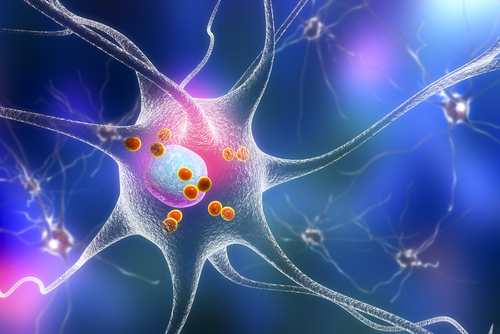Animal Study Links Inactivation of the Autophagy Gene ATG7 to the Onset of ALS, FTD

Inactivation of ATG7, one of the genes that controls autophagy — a process in which cells degrade or recycle components that are damaged or no longer needed — is linked to the onset of amyotrophic lateral sclerosis (ALS) and frontotemporal dementia (FTD), a study says.
Results from the study, “Upregulation of ATG7 attenuates motor neuron dysfunction associated with depletion of TARDBP/TDP-43,” were published in Autophagy.
ALS and FTD are neurological disorders characterized by the progressive accumulation of TDP-43 (also known as TARDBP), a protein that normally binds and stabilizes RNA, inside the cytoplasm (the material found inside cells) of nerve cells, accompanied by a gradual depletion in the nuclei (the compartment that stores cells’ genetic information).
“We previously showed that the ability of TARDBP to repress nonconserved cryptic exons was impaired in brains of patients with ALS and FTD, suggesting that its nuclear depletion contributes to neurodegeneration. However, the critical pathways impacted by the failure to repress cryptic exons that may contribute to neurodegeneration remain undefined,” the researchers explained.
Exons are the coding sequence of a gene that provides instructions to make proteins; cryptic exons are smaller exons that normally are not included in the final template that is used for the production of proteins.
Join our ALS forums: an online community especially for patients with Amyotrophic Lateral Sclerosis.
In this study a group of researchers from Johns Hopkins University School of Medicine in Baltimore, Maryland, set out to explore how the loss of TARDBP from the nuclei of nerve cells might lead to neurodegeneration using two different animal models of ALS-FTD.
They started by comparing the transcriptome — the group of all RNA molecules, or transcripts, produced from active genes in a cell or tissue — of muscle cells and neurons from mice lacking a functional Tardp gene (the mouse equivalent of the human TARDBP gene), “reasoning that common targets affected in different cell types could represent a shared outcome of TARDBP loss.”
Analysis revealed that Atg7 (the mouse equivalent of the human ATG7 gene), one of the master gene regulators of autophagy, was downregulated (lowly expressed) in both cell types.
Experiments performed on mice lacking a functional TARDBP protein and on fruit flies lacking a functional TBPH protein (the flies’ equivalent of the human TARDBP protein) showed that:
- Both animal models had progressive motor neuron (nerve cells responsible for controlling voluntary muscles) degeneration and motor impairments that worsened with aging;
- Both animal models had low expression levels of Atg7 and impaired autophagy, which was confirmed by the presence of a high number of autophagy deposits that accumulated inside motor neurons.
Finally, they found that when they overexpressed the Atg7 gene in motor neurons of fruit flies lacking a functional TBPH protein, they were able to prolong motor neuron survival and lessen flies’ motor deficits.
“Together with our observation that ATG7 is reduced in ALS-FTD brain tissues, these findings identify the autophagy pathway as one key effector of nuclear depletion of TARDBP that contributes to neurodegeneration. Moreover, our findings identify ATG7 as a molecular target for development of therapeutic strategies to attenuate or halt disease progression in ALS-FTD,” they wrote.
“[T]his research would contribute towards the development of a new treatment for neurodegenerative diseases, aiming to activate the autophagy function of cell,” Jeong Yun-ha, MD, senior researcher at the Korea Brain Research Institute (KBRI) and one of the study’s authors, said in a press release.






